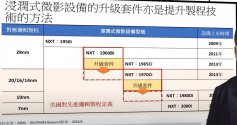Phytium 5000c adopts domestic 14nm process to make 64 cores, which is of great significance
Phytium S5000 originally planned to use the overseas 7nm process for mass production. The original plan was 80 cores. After being included in the list by the United States, it was changed to domestic 14nm process mass production and became 64-core S5000C. The multi-core score was slightly lower, but still higher than 1000 points , still achieve double the growth of the previous generation S2500.
The main highlights of the S5000C are:
1. The use of domestic 14nm to make 64-core server products proves that domestic technology is fully capable of making server CPUs that meet high-end needs such as cloud computing. Considering that some domestic GPU and AI chip design companies have also been sanctioned by the United States recently, these companies can also switch back to domestic sanctions in the future.
2. Using the chiplet method, four dies are packaged to achieve 64 cores, which shows that domestic companies can also play with the chiplet design.
3. DDR5-4400 is realized by using 14nm technology, which is only slightly lower than the originally planned DDR5-4800 frequency. Internationally, CPUs using DDR5 generally need to be implemented with a process below 7nm because of power consumption constraints. Domestic companies can use 14nm to make DDR5-4400, which shows that the design capability is quite good.
4. Equipped with 96 lanes PCIE 5.0, the expansion IO is very rich, 32 lanes more than the originally planned S5000, more suitable for cloud computing hosts, higher IO bandwidth, and can be used with various computing cards to achieve a higher overall machine performance.
5. Single CPU SPEC06>1000 points, which is only 200 points less than the original S5000, and this score has already surpassed the latest Hygon 3 server CPU that introduced AMD X86 technology, indicating that independent innovation technology can completely surpass the introduction of foreign technology .

